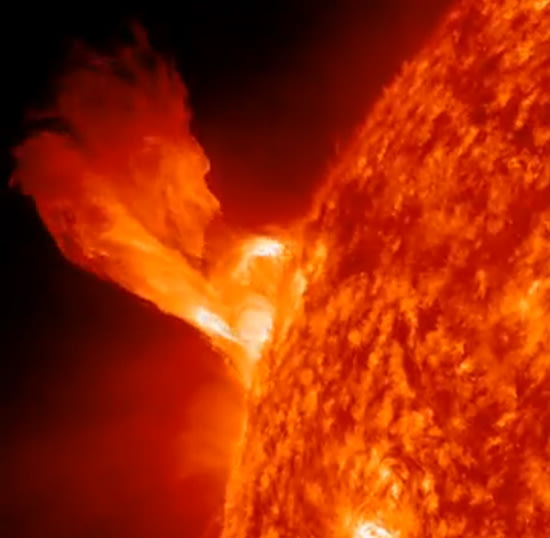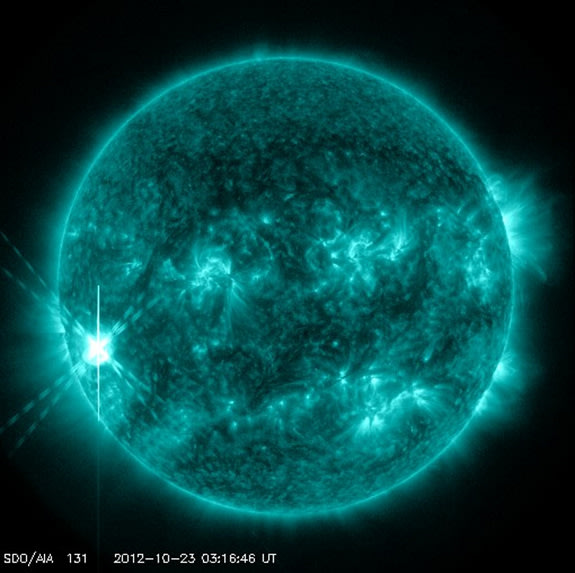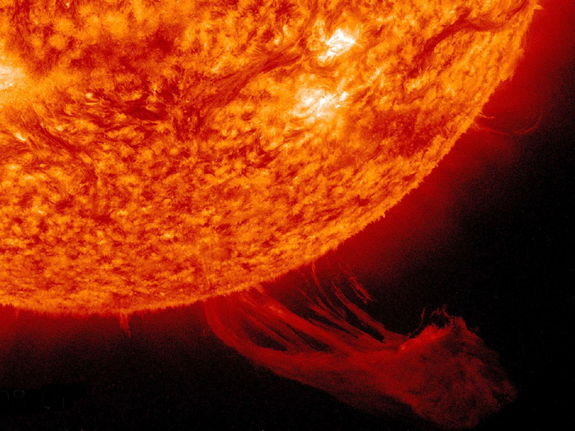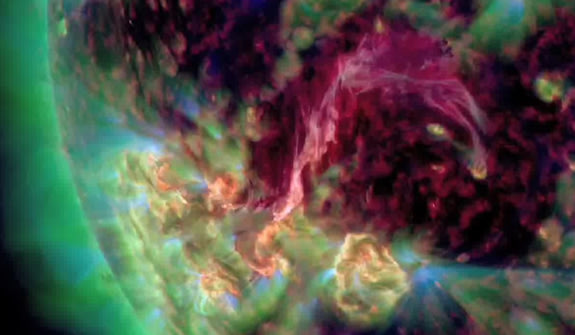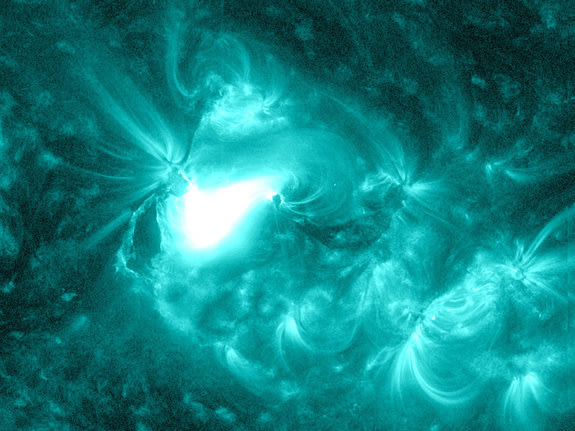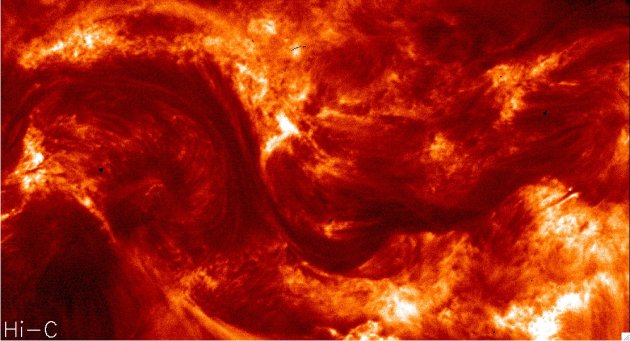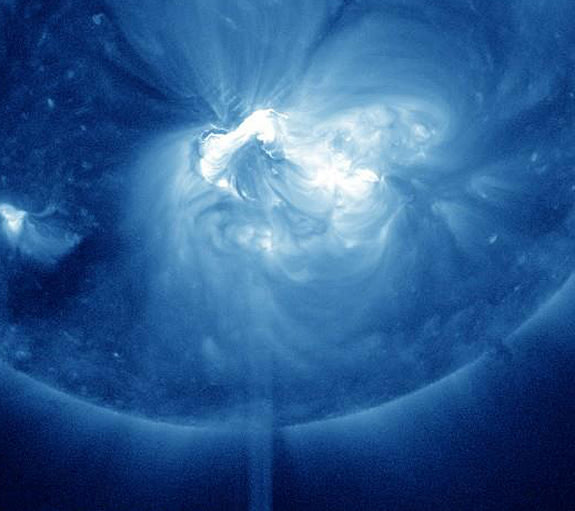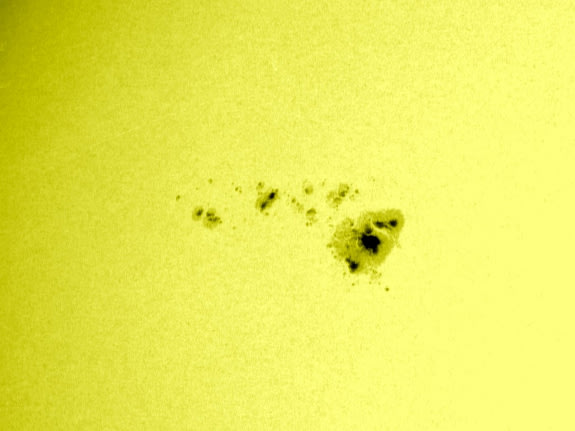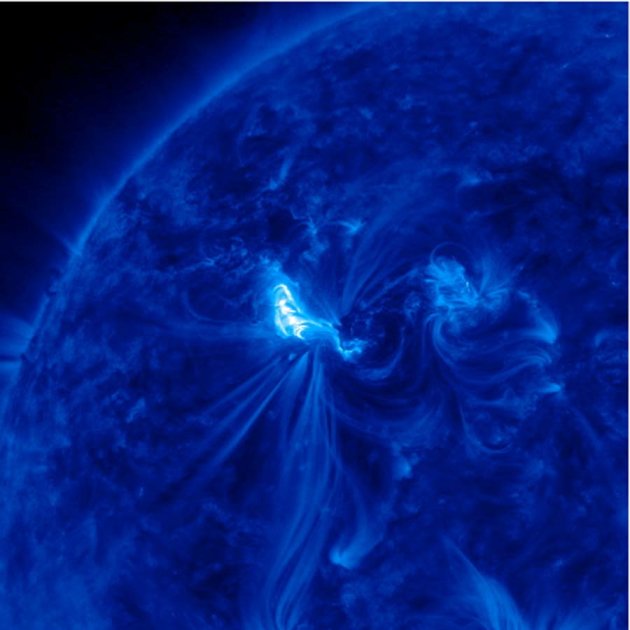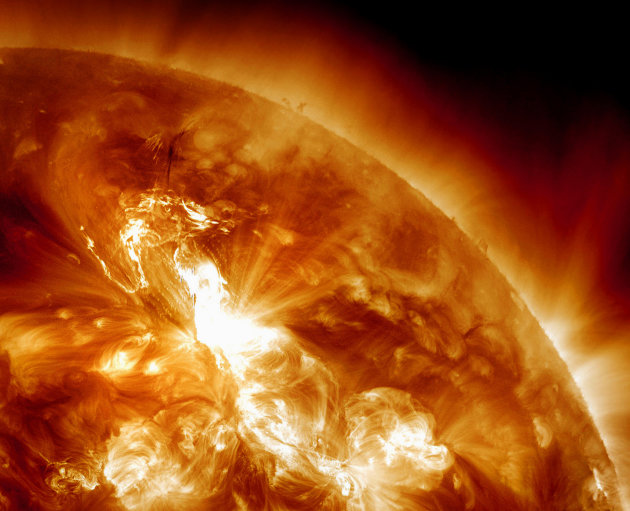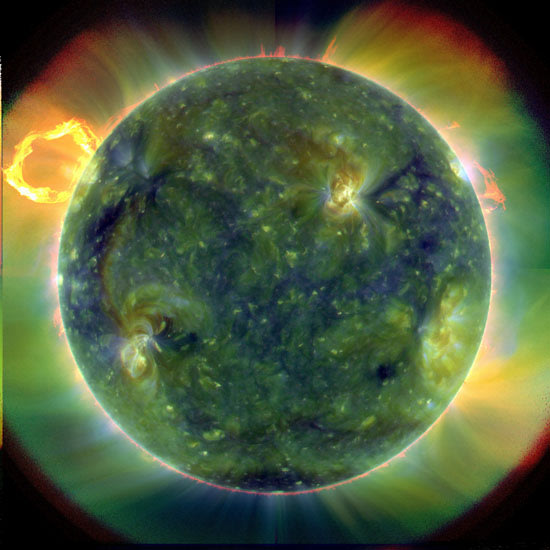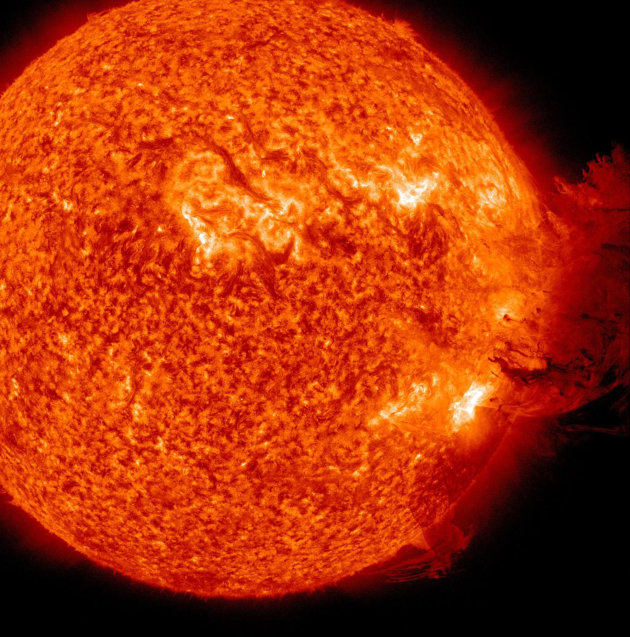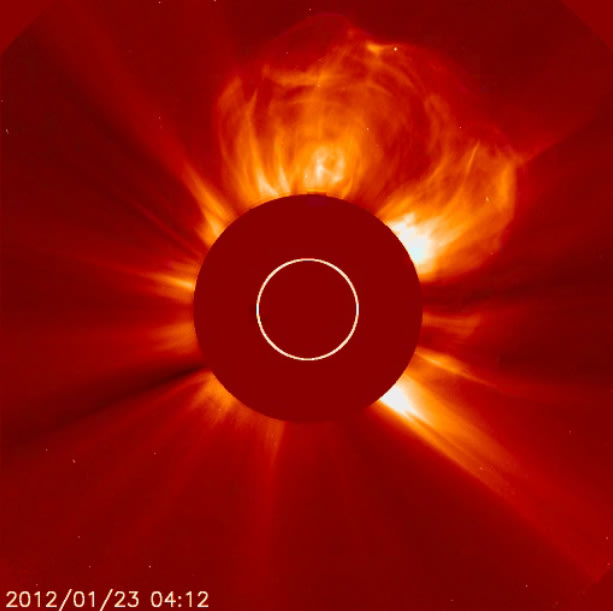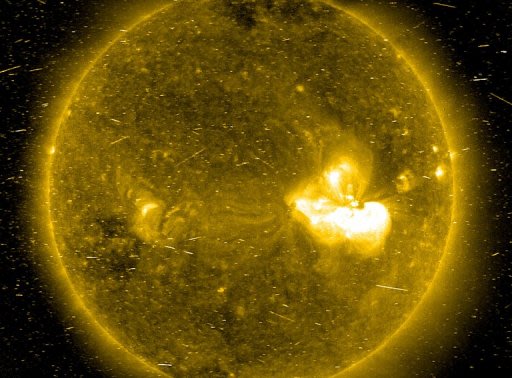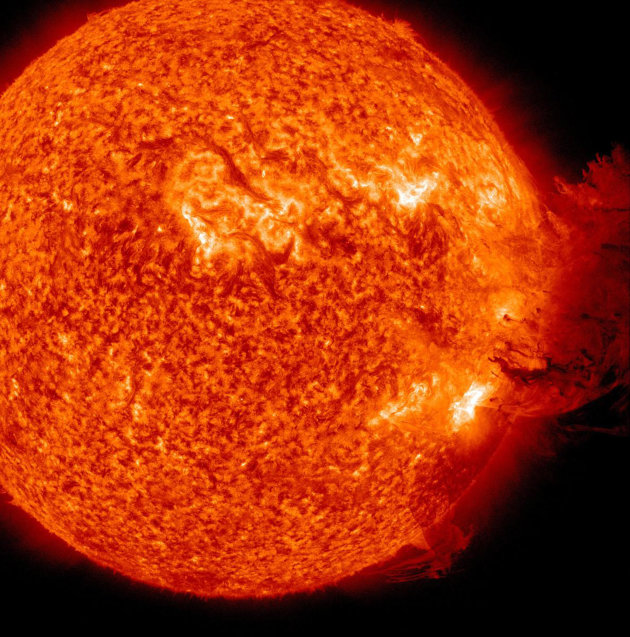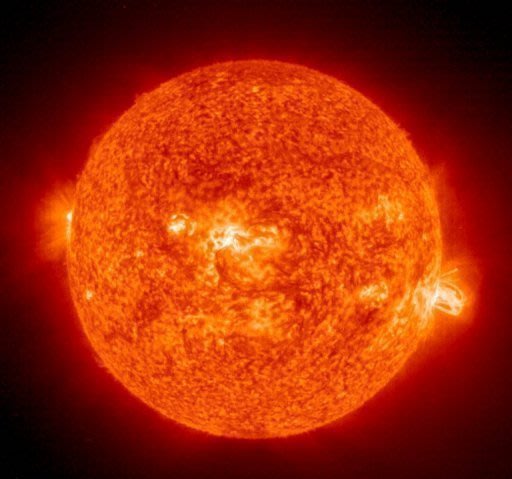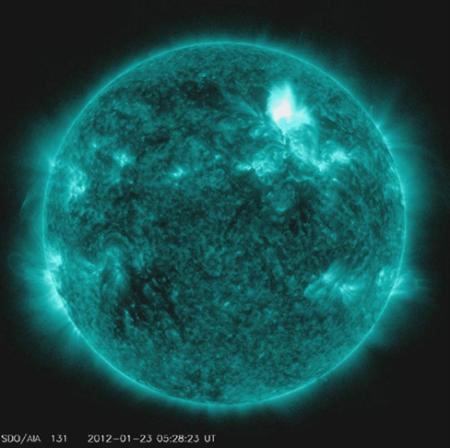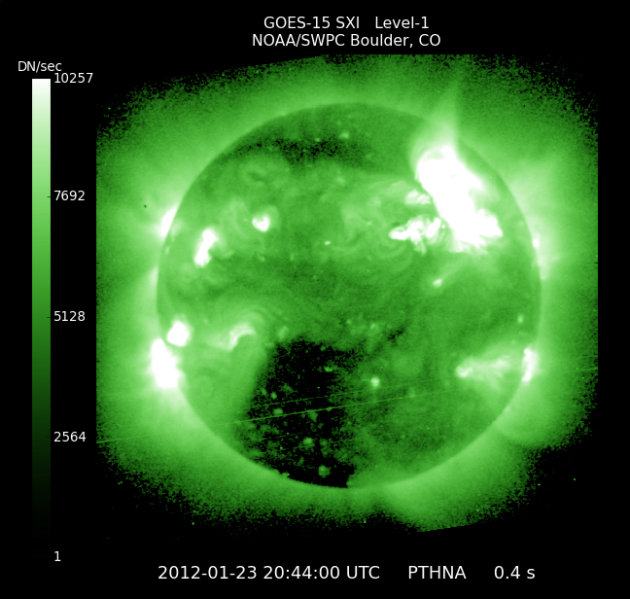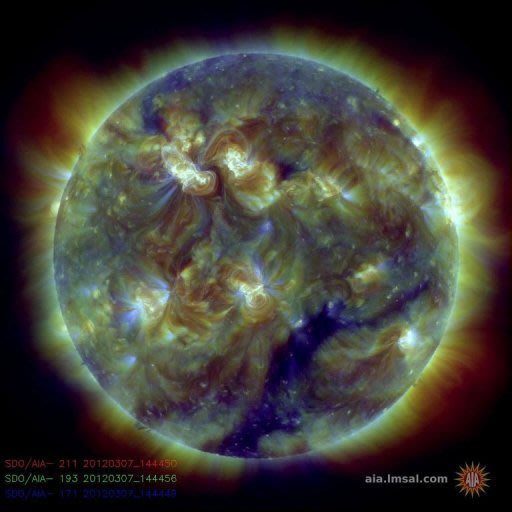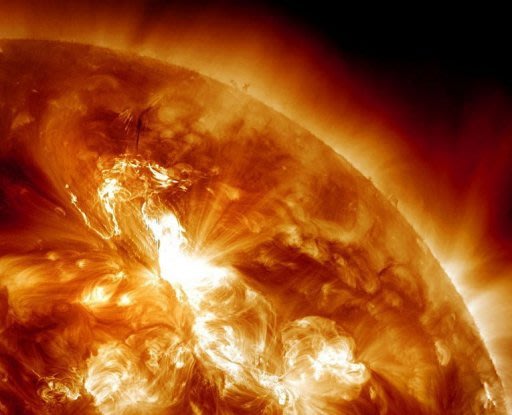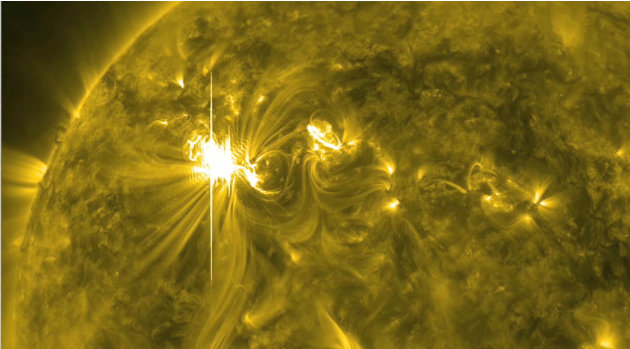Mari kita melihat lebih dekat seperti apa bentuk foto-foto menakjubkan dari badai matahari yang berhasil di ambil oleh NASA. Ayo kita simak bersama dibawah ini....
This still from a NASA video shows the New Year's Eve sun eruption of Dec. 31, 2012, to kick off the New Year. NASA's Solar Dynamics Observatory captured the video.
NASA's Solar Dynamics Observatory satellite captured this photo of the X-class solar flare unleashed from the sun Oct. 22, 2012.
A solar prominence rose up and swept away from the sun as captured in this image at 4:15 a.m. EDT on Oct. 19, 2012.
A pinkish-purple filament of hot plasma connects two sunspots in this ultraviolet view recorded by NASA's Solar Dynamics Observatory spacecraft on Aug. 4, 2012.
The Solar Dynamics Observatory captured this image of an M1.2 class flare on June 13, 2012. The sun is shown here in teal as this is the color typically used to represent light in the 131 Angstrom wavelength, a wavelength particularly good for
NASA's High Resolution Coronal Imager, or Hi-C, captured the highest-resolution images ever taken of the sun's corona in the extreme ultraviolet wavelength. The innovative telescope, launched on a sounding rocket at White Sands Missile Range in New Mexico July 11, 2012, focused on a large active region on the sun. The resulting images reveal the dynamic structure of the solar atmosphere in the finest detail ever seen. (NASA)
An X1.4 class flare erupted from the center of the sun, peaking on July 12, 2012 at 12:52 PM EDT. It erupted from Active Region 1520 which rotated into view on July 6. A blast of charged solar particles from a solar storm was due to arrive July 14 and shake Earth's magnetic field.
Sunspot AR 1476 compared to the size of Jupiter. Image released May 10, 2012.
The upper left corner of this image of the sun shows the biggest and most complex sunspot visible on the sun as of May 9, 2012. It has produced 7 M-class flares so far, but has not produced any coronal mass ejections that could cause geomagneti
The sun unleashed an M4.7 class flare at 8:32 EDT on May 9, 2012 as captured here by NASA’s Solar Dynamics Observatory. The flare was over quickly and there was no coronal mass ejection associated with it. This image is shown in the 131 Angstro
The sun unleashed two massive X-class solar flares on March 6, 2012. The flare erupted from the giant active sunspot AR1429.
This handout image provided by NASA, taken Sunday night, Jan. 22, 2012, shows a solar flare erupting on the Sun's northeastern hemisphere. Space weather officials say the strongest solar storm in more than six years is already bombarding Earth with radiation with more to come. The Space Weather Prediction Center in Colorado observed a flare Sunday night at 11 p.m. EST. Physicist Doug Biesecker said the biggest concern from the speedy eruption is the radiation, which arrived on Earth an hour later. It will likely continue through Wednesday. It's mostly an issue for astronauts' health and satellite disruptions. It can cause communication problems for airplanes that go over the poles. (AP Photo/NASA)
This image provided Wednesday, April 21, 2010 by NASA shows an eruptive prominence blasting away from the sun, upper left, March 30, 2010 observed by the Solar Dynamics Observatory satellite. NASA on Wednesday unveiled the first images from the new satellite designed to predict disruptive solar storms, and scientists say they're already learning new things. (AP Photo/NASA)
This image provided by NASA shows the Sun unleashing a medium-sized solar flare, a minor radiation storm and a spectacular coronal mass ejection on June 7, 2011. The large cloud of particles mushroomed up and fell back down looking as if it covered an area of almost half the solar surface. The ejection should deliver a glancing blow to Earth's magnetic field during the late hours of June 8th or June 9th. High-latitude sky watchers should be alert for auroras when the CME arrives. (AP Photo/NASA)
In this handout from the NOAA/National Weather Service's Space Weather Prediction Center, shows the coronal mass ejection (CME) erupting from the sun late January 23, 2012. The flare is reportedly the largest since 2005 and is expected to affect GPS systems and other communications when it reaches the Earth's magnetic field in the morning of January 24. (Photo by NOAA/National Weather Service's Space Weather Prediction Center via Getty Images)
This 2006 Solar and Heliospheric Observatory (SOHO) Extreme ultraviolet Imaging Telescope (EIT) image shows a flare on the Sun. An unusual solar flare observed by a NASA space observatory on Tuesday could cause some disruptions to satellites, communications and power on Earth over the next day or so, officials said. An eruption of similar magnitude has not been witnessed since 2006
N SPACE - JUNE 7: In this handout from NASA/Solar Dynamics Observatory, a solar large flare erupts off the sun June 7, 2011 in space. A large cloud of particles flew up and then was pulled back down to the sun's surface. According to NASA, the event is not suppose have any effect once the particles reach the earth on either June 8 or June 9. (Photo by NASA/Solar Dynamics Observatory via Getty Images)
A NASA image of an erupting solar flare. A geomagnetic space storm sparked by a solar eruption like the one that flared toward Earth Tuesday is bound to strike again and could wreak havoc
NASA
image shows a solar flare that leapt from the Sun in 2000. A wave of
charged plasma particles from a huge solar eruption has glanced off the
Earth's northern pole, lighting up auroras and disrupting some radio
communications, a NASA scientist said


